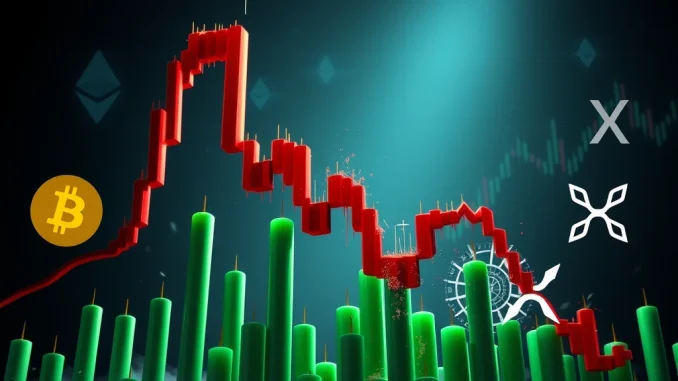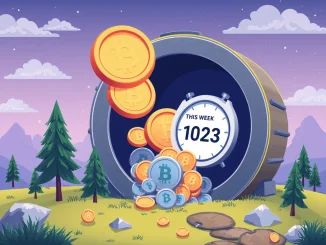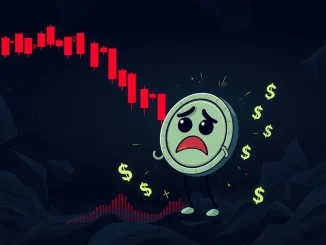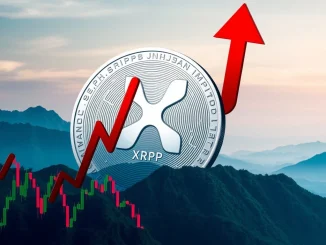
Hold onto your hats, crypto traders! The market has just witnessed a significant shake-up. Over the past 24 hours, a staggering amount of positions in perpetual futures contracts have been liquidated, sending ripples across the cryptocurrency landscape. Are you prepared to understand what happened and, more importantly, what it means for your trading strategy? Let’s dive into the critical crypto liquidations breakdown and uncover the details.
What Exactly Are Crypto Perpetual Futures Liquidations?
Before we delve into the numbers, let’s quickly recap what perpetual futures and liquidations are, especially for those newer to crypto derivatives trading. Perpetual futures are contracts that, unlike traditional futures, don’t have an expiry date. They allow traders to bet on the future price of an asset with leverage. Liquidation happens when a trader’s position moves against them, and their margin balance falls below the maintenance margin level. In simpler terms, if the market goes the wrong way and you’re over-leveraged, your position gets automatically closed to prevent further losses. In a highly volatile market like crypto, liquidations can occur rapidly and dramatically, impacting market momentum.
Shocking 24-Hour Crypto Liquidations Breakdown: The Numbers Don’t Lie
The last 24 hours have been a rollercoaster for crypto markets. Let’s break down the shocking crypto liquidations across three major cryptocurrencies: Bitcoin (BTC), Ethereum (ETH), and XRP. Prepare for some eye-opening figures:
- Bitcoin (BTC) Liquidation: A massive $117.11 million was liquidated in Bitcoin perpetual futures contracts. What’s even more striking is that a whopping 92.28% of these liquidations were from long positions. This suggests a significant number of traders were betting on Bitcoin’s price going up, only to be caught off guard by a downward price movement.
- Ethereum (ETH) Liquidation: Ethereum wasn’t spared either. $134.52 million in ETH perpetual futures were liquidated. Similar to Bitcoin, the vast majority, 90.63%, were long positions. This indicates a similar market sentiment and price action impacting Ethereum traders.
- XRP Liquidation: While smaller in absolute value compared to BTC and ETH, XRP still saw substantial liquidations. $25.22 million worth of XRP perpetual futures were liquidated, with an overwhelming 93.5% originating from long positions. This highlights a broad market trend affecting various cryptocurrencies.
To visualize this data more clearly, let’s look at it in a table:
| Cryptocurrency | Liquidation Amount (USD) | Long Liquidation Percentage |
|---|---|---|
| BTC | $117.11 million | 92.28% |
| ETH | $134.52 million | 90.63% |
| XRP | $25.22 million | 93.5% |
Why Were Long Positions Dominantly Liquidated?
The overwhelming dominance of long position liquidations across BTC, ETH, and XRP points to a clear market narrative. Several factors could have contributed to this:
- Sudden Market Downturn: A sharp and unexpected drop in price across major cryptocurrencies likely triggered a cascade of liquidations. When prices fall rapidly, traders in leveraged long positions quickly find themselves in the red, leading to margin calls and subsequent liquidations.
- Overleveraged Positions: The allure of high leverage in crypto trading can be tempting. However, it’s a double-edged sword. Many traders might have been using excessive leverage, amplifying their potential gains but also dramatically increasing their risk of liquidation when the market moves against them.
- Market Sentiment Shift: Underlying market sentiment can change quickly in the crypto space. Perhaps negative news, macroeconomic factors, or even whale activity could have shifted the overall market sentiment from bullish to bearish, triggering the price decline and liquidations.
- Contagion Effect: Liquidations themselves can exacerbate price drops. As large long positions are forcefully closed, it adds selling pressure to the market, potentially triggering further liquidations in a domino effect.
What Does This Mean for Crypto Traders and Investors?
This 24-hour crypto liquidation breakdown serves as a stark reminder of the inherent risks in cryptocurrency trading, especially when using leverage. Here are some crucial takeaways and actionable insights:
- Risk Management is Paramount: Always prioritize robust risk management strategies. Understand leverage and its implications. Never trade with more capital than you can afford to lose. Implement stop-loss orders to limit potential losses and protect your capital during volatile market conditions.
- Understand Market Volatility: Cryptocurrency markets are known for their extreme volatility. Be prepared for sudden price swings and avoid complacency. Stay informed about market news and factors that could influence price movements.
- Diversification Can Help: While this liquidation event affected major cryptos, diversification across different assets can potentially mitigate risk. Don’t put all your eggs in one basket.
- Learn from Market Events: These liquidation events, while painful for those affected, offer valuable learning opportunities. Analyze what happened, understand the market dynamics, and refine your trading strategies accordingly.
- Consider Lower Leverage or Spot Trading: If you are risk-averse or new to crypto trading, consider using lower leverage or focusing on spot trading (buying and selling the actual asset) to reduce the risk of liquidation.
Looking Ahead: Navigating the Volatile Crypto Seas
The Bitcoin liquidation, Ethereum liquidation, and XRP liquidation data from the past 24 hours paint a clear picture of the crypto market’s volatile nature. While liquidations can be unsettling, they are a normal part of leveraged trading. Understanding these events, learning from them, and adapting your strategies are crucial for long-term success in the dynamic world of cryptocurrency trading. Stay informed, trade responsibly, and navigate these crypto seas with caution and knowledge.
Did this crypto liquidation breakdown surprise you? What are your thoughts on the current market volatility? Share your perspective in the comments below!



